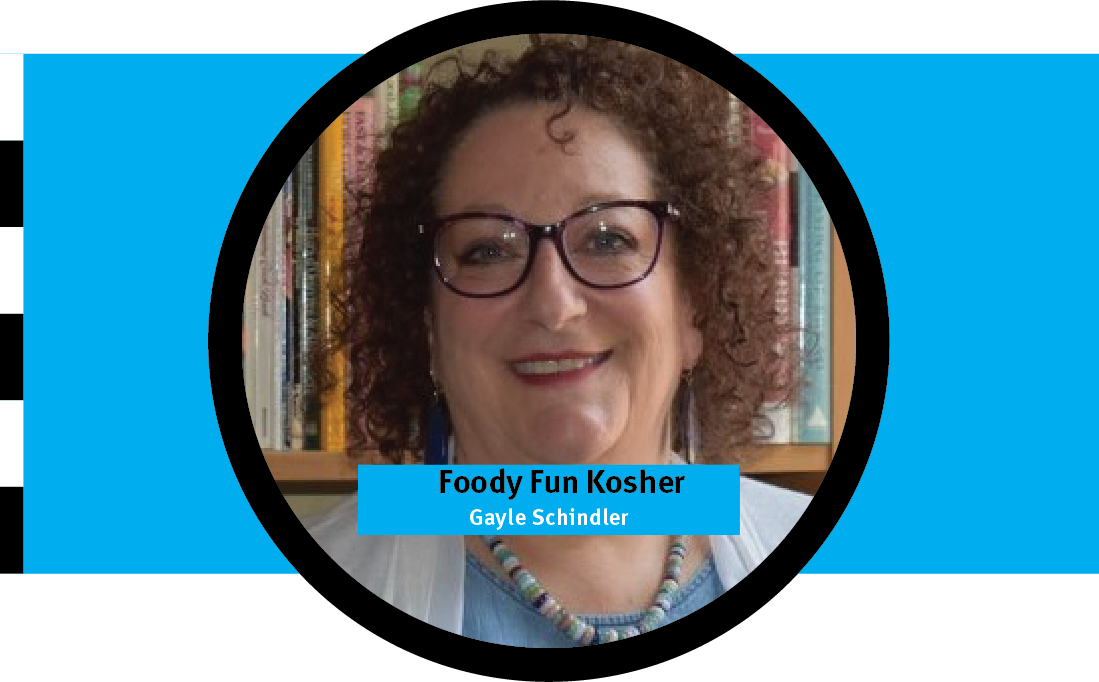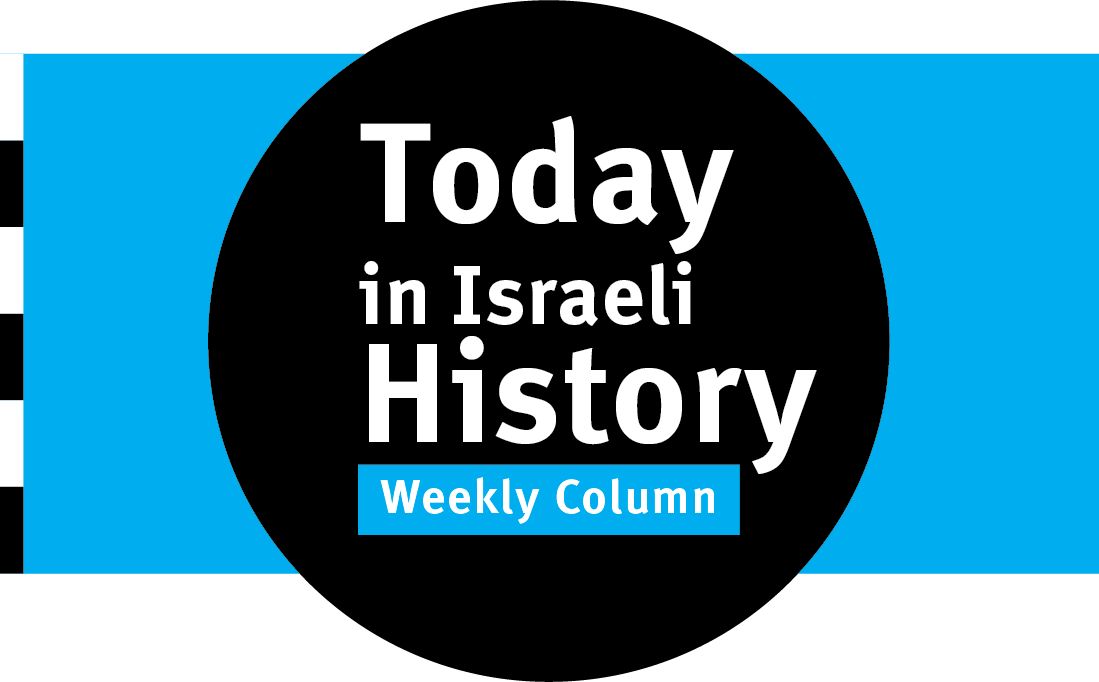
The Rabbis got it right when they created the interactive, child-friendly, home-based Seder as the way to tell the Pesach story — our people’s master story. Despite what many may think, the Haggadah is not a rigid, unchanging canonized text. It has always been more of a road map or a template. Almost since its inception, Jews around the world have adapted the Seder to accommodate their current circumstances.
We do not open the door for Elijah because we really expect to find him on our porch. We open the door because during most of our history we were afraid of who might be watching or listening. While the door is open, we recite, “Pour out your wrath…” We certainly don’t want anybody outside to hear that passage, which was added during the Middle Ages in response to the Crusades and pogroms which typically occurred around Easter and Pesach.
More recently, many have added symbolic foods and prayers to reflect the world in which WE live now. My family has adopted some of these practices. And sadly, this year another new, heartbreaking addition will appear on our Seder table. We will eat dried dates and recite the Prayer for the State of Israel to represent our desperate hope and prayers for the return of our hostages and safety of our IDF soldiers.
These are some of the other practices that we have included in our family Seders.
An Empty Chair or The Fifth Child: After the Six Day War in 1967, the movement to talk about and remember the Holocaust began in earnest. Survivors came out of the closet and began telling their stories in public; American Jews started listening. In my Hebrew school, teachers suggested that we set an empty place at the table to remember the six million victims of the Shoah. My parents, aunts, and uncles were survivors. We did not need an empty seat at our table to remember everyone we lost.
Orange on the Seder Plate: In the 80s, we added an orange to the Seder plate. We thought it was a feminist gesture to support egalitarianism. The story went that when a woman rabbi was introduced at a synagogue, a man yelled, “A woman belongs on the bimah as much as an orange belongs on a Seder plate.” And from that point forward, women everywhere started putting oranges on Seder plates. I shared this explanation with my guests for years.
But I was wrong. The real story begins with Susannah Heschel, well-known Jewish feminist scholar and daughter of Rabbi Abraham Joshua Heschel. She was given an early feminist Haggadah from Oberlin College Hillel. A crust of bread was added to the Seder plate as a sign of solidarity with gay Jewish women. It was meant to symbolize their feeling of being shunned — there’s as much room for gays in Judaism as there is for a crust of bread on the Seder plate.
However, Heschel felt that bread, which in fact does not belong on a Seder plate, would send the wrong message. Using it as a symbol for gays seemed to reinforce the belief that they violate Judaism like hametz violates Passover.
So, at her next Seder, Heschel chose an orange to symbolize inclusion of gays and others who are marginalized in the Jewish community. She offered the orange as a symbol of the fruitfulness for all Jews when everyone is accepted as contributing and active members of Jewish life.
Because of this story and in response to so much false information on social media, I now also talk about the orange as a lesson in fact checking.
Soviet Jewry: In 1987, CLAL: The National Jewish Center for Learning and Leadership and The National Conference on Soviet Jewry (NCSJ) released not just a single symbol, but an entire Freedom Haggadah for Soviet Jewry. At the time, when a Jew in the Soviet Union applied for a visa to leave, they were refused, stripped of their job, often arrested, and imprisoned in terrible conditions, sometimes for years. These Jews became known as Refuseniks. NCSJ worked with the US State Department and Congress to apply pressure to the Soviets to “Let Our People Go!”
We all know what happened. The Berlin Wall came down, the Soviet Union collapsed, and millions of Soviet Jews scrambled to get out. Most of them landed in Israel, the US, and Germany, where they now live in freedom to be Jews.
Miriam’s Cup: Where are the women in the story? The Haggadah doesn’t mention them, but the original Torah story begins with heroic women who defied Pharoh, putting themselves in grave danger to protect the children. We never learn the name of Moses’ mother, but we meet the midwives, Shifrah and Puah. Even after Pharoh’s decree to drown male Hebrew babies, these two strong women continue to help Hebrew women give birth and they bravely lie to Pharoh’s face. When Moses’ mother makes the heart-wrenching decision to float her three-month old son down the river in a basket, she sends his sister, Miriam, to watch over him. And of course, there is Pharoh’s daughter, who finds and adopts the baby, knowing full well that he is a Hebrew child.
Miriam is a key character in our origin story. She was a close confidant and advisor to Moses and a prophet in her own right. Legend tells of a mysterious well of Mayim Chayyim, Living Waters, that followed the Israelites through the desert while Miriam was alive. Miriam’s Well was said to hold Divine power to heal and renew. Its fresh water sustained our people as we changed from a generation shaped by slavery into a free nation. We add Miriam’s Cup, filled with spring water, to our Seder to honor her contribution to the Jewish people.
The Tea Bag: Eleanor Roosevelt said, “A woman is like a tea bag. You never know how strong she is until you put her in hot water.”
When cooking, putting things in hot water changes them. Put vegetables in hot water; they get soft. Put eggs in hot water; they get hard. But put a tea bag in hot water and it changes the water. In the same way, strong women who take action change everything around them.
Rabbi Avira teaches, “In the merit of the righteous women that were in that generation, the Jewish people were redeemed from Egypt.” So, we put a tea bag in an empty cup on our Seder table. During the story telling, we fill it with hot water.
Ruth’s Mix: Another new symbolic food is Ruth’s Mix — a mixture of almonds, raisins, and chocolate chips. Ruth, the great-grandmother of King David, is considered the model for Jewish conversion because her mother-in-law, Naomi, turned her away three times, but each time Ruth cried and refused, uttering the famous words: “…wherever you go, I will go. Where you lodge, I will lodge. Your people are my people. And your G_d is my G_d. Where you die, I will die, and there I will be buried.”
Ruth’s Mix symbolizes that everyone in our worldwide Jewish family is welcome, not only at our Seder tables, but also in our community all year long. Originally Ruth’s Mix was meant to acknowledge interfaith families and their non-Jewish members who are part of our community. But even this new symbol has already changed; it’s been adapted to recognize that our family also includes Jews from all over the world and Jews of color, who may have different traditions from our own Ashkenazi heritage. Each ingredient in Ruth’s mix is good on its own, but together they are better.
Sunflower Seeds: Two years ago, we added sunflower seeds to our seder plate to symbolize our sorrow over the Russian invasion of Ukraine and our solidarity with its people. We Jews have a complicated history in Ukraine, but it turns out that most of the “Russian” Jews who left the crumbling Soviet Union more than 30 years ago, were in fact Ukrainian, not Russian at all. Regardless, as Americans and lovers of freedom and democracy, we support Ukraine against a common enemy.
Everything Else: Over the years, we have used the flexible format of the Haggadah to talk about so many other issues. Sometimes we added a physical symbol to the table; other times a prayer or reading. We have talked about hunger, refugees, immigrants, race relations, and human trafficking. I also found readings about missing Israeli soldiers and Israeli victims of terrorism.
THIS YEAR – DATES: This year we add whole dates to our table to symbolize our heartbreak over the October 7 massacre in Israel, our desperation for the release of our hostages, and both our anguish and resolve about the current war.
The current rise in open and unapologetic antisemitism is terrifying. So, while we celebrate our freedom, at our seder we will also offer our guests resources to help them deal with personal attacks, social media, and political action.
Almond Flour Crackers
From The Easy Keto Cookbook, Maya Krampf
These crackers are easy to make, kosher l’Pesach, and gluten free. They’re a great addition to your Seder table as a snack before Motzi. They keep well for the week in a tightly sealed container.
Ingredients
2 C almond flour
½ tsp salt
1 large egg, beaten
Directions
1. Preheat oven to 350 degrees.
2. Mix the almond flour & sea salt in a large bowl.
3. Add the egg and mix well, until a dough forms.
4. Place the dough between 2 large pieces of parchment paper. Use a rolling pin to roll out to a rectangle, about 1/16 inch thick.
5. Cut the cracker dough into rectangles or use a cookie cutter for rounds.
6. Prick each cracker with a fork.
7. Place on a parchment paper lined baking sheet. Bake for 8-12 minutes, until golden.
8. Remove to a cookie rack to cool. Crackers will crisp up as they cool.





